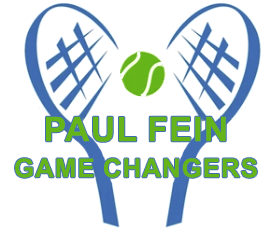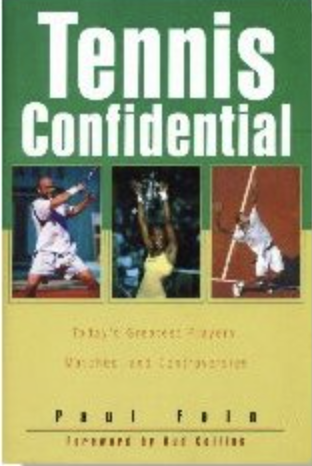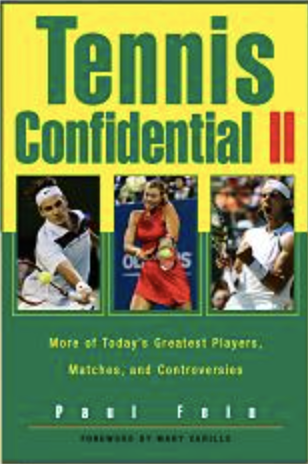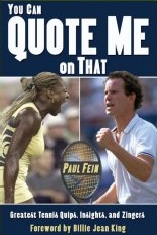What are the most Under-Appreciated and Under-Practiced Shots in Tennis?
Hits: 101
Tennis Channel analysts Mark Petchey, Jimmy Arias, and Brett Haber recently discussed this important topic.
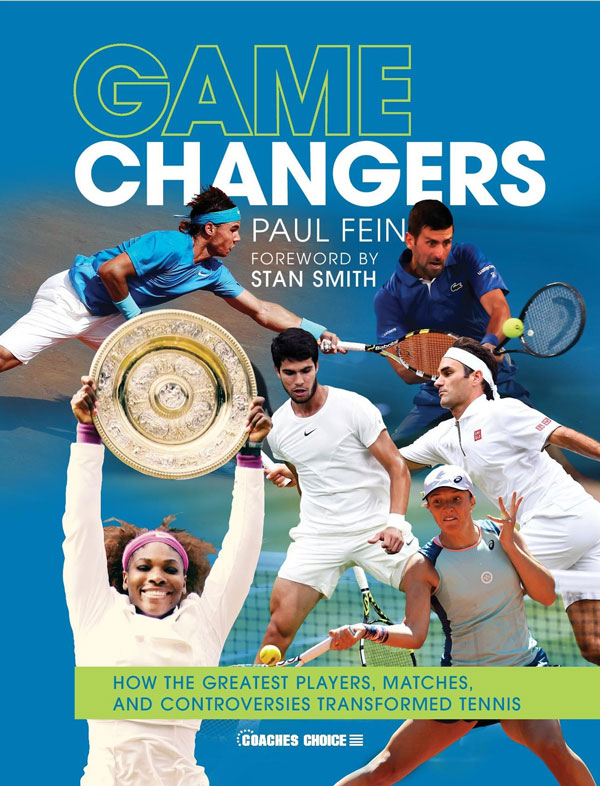 Petchey, a 1990s British standout who later coached Andy Murray, picked the slice forehand — often called a “squash shot" — when scrambling to reach a powerful and accurate shot outside the alley and often very deep. Its short backswing and nasty, low, skidding bounce are its assets. Its low-trajectory flight, though, is a double-edged sword. It can be tough to volley, but many of its errors go into the net, and it sometimes lands short in your opponent’s court. Squash players like Mark Knowles can hit this shot naturally, while that may be less true of Western forehand players with extreme grips producing pronounced topspin. With that in mind, they could develop towering topspin lobs to get out of defensive trouble.Arias, the former world No. 4 and a respected coach, chose return of serve, noting that although it was not under-appreciated, it was under-practiced. Jimmy is certainly right. First, the serve return is the second most-used and important shot in tennis after the serve. Second, like the serve, it can be quite versatile. For example, its technique must be sound to return terrific flat, slice, and kick serves that typically target the four corners of the two service boxes and two central spots for “body serves.” The best serve returns do that but also attack weak second serves that lack power, spin, placement, depth, and variety. Doubles has helped many players become excellent serve returners in the deuce or ad courts, and perhaps both if they play with different partners. Make sure your practice sessions include serving and returning periods. If you see someone practicing their serve alone on a court, you can also ask them if it’s okay if you return their serve for a few minutes.Haber selected a tactic that Carlos Alcaraz and rising Brazilian star Joao Fonseca sometimes use. Instead of the flashy but low-percentage back-to-the-net “tweener,” they sprint back to return ultra-deep lobs with often effective runaround forehands. A third option is defending the old-fashioned but time-tested way with a towering and—you hope—very deep lob to hang in the point. Your coach might want to create a drill where you volley from close to the net and he hits a sadistically deep lob. You have these three options. Which option works best? And against net-rushers or baseliners? On different court surfaces? On windy days? You get the idea.Drop shots have become more common on ATP and WTA tours. They include the traditional drop shots with heavy backspin (with little or no distance between their first and second bounces) and the increasingly common hybrid drop shot-angle. This shot has less backspin and is angled sharply crosscourt and short, usually with sidespin. How well do you anticipate drop shots? How fast are you sprinting forward to reach them? How effective are your various shots to counter drop shots when you arrive? Daniil Medvedev, the 6’6” Russian, returns many first serves from 10 to 20 feet behind the baseline and rallies from deeper positions than most players. To simulate tournament scenarios, his practice sessions include sprinting from the back wall or fence—the maximum distance—to reach drop shots from his coach. If Medvedev can reach them and hit a good shot, he’s better prepared for the diabolical drop shots of Alcaraz and others.Lastly, I nominate the unheralded, insufficiently taught but extremely important split step. BJ Miller, a split-step researcher and analyst from Oakland, California, has shown that many top 100 players split step inefficiently. As a result, they waste a precious 0.2 seconds on average. That may not seem like a big deal when you’re cooking your favorite food, but it’s often disastrous when you’re trying to reach and return a strong serve, top-notch passing shot, or distant groundstroke. If you want to learn more about how to rectify this common problem, contact BJ Miller at
Petchey, a 1990s British standout who later coached Andy Murray, picked the slice forehand — often called a “squash shot" — when scrambling to reach a powerful and accurate shot outside the alley and often very deep. Its short backswing and nasty, low, skidding bounce are its assets. Its low-trajectory flight, though, is a double-edged sword. It can be tough to volley, but many of its errors go into the net, and it sometimes lands short in your opponent’s court. Squash players like Mark Knowles can hit this shot naturally, while that may be less true of Western forehand players with extreme grips producing pronounced topspin. With that in mind, they could develop towering topspin lobs to get out of defensive trouble.Arias, the former world No. 4 and a respected coach, chose return of serve, noting that although it was not under-appreciated, it was under-practiced. Jimmy is certainly right. First, the serve return is the second most-used and important shot in tennis after the serve. Second, like the serve, it can be quite versatile. For example, its technique must be sound to return terrific flat, slice, and kick serves that typically target the four corners of the two service boxes and two central spots for “body serves.” The best serve returns do that but also attack weak second serves that lack power, spin, placement, depth, and variety. Doubles has helped many players become excellent serve returners in the deuce or ad courts, and perhaps both if they play with different partners. Make sure your practice sessions include serving and returning periods. If you see someone practicing their serve alone on a court, you can also ask them if it’s okay if you return their serve for a few minutes.Haber selected a tactic that Carlos Alcaraz and rising Brazilian star Joao Fonseca sometimes use. Instead of the flashy but low-percentage back-to-the-net “tweener,” they sprint back to return ultra-deep lobs with often effective runaround forehands. A third option is defending the old-fashioned but time-tested way with a towering and—you hope—very deep lob to hang in the point. Your coach might want to create a drill where you volley from close to the net and he hits a sadistically deep lob. You have these three options. Which option works best? And against net-rushers or baseliners? On different court surfaces? On windy days? You get the idea.Drop shots have become more common on ATP and WTA tours. They include the traditional drop shots with heavy backspin (with little or no distance between their first and second bounces) and the increasingly common hybrid drop shot-angle. This shot has less backspin and is angled sharply crosscourt and short, usually with sidespin. How well do you anticipate drop shots? How fast are you sprinting forward to reach them? How effective are your various shots to counter drop shots when you arrive? Daniil Medvedev, the 6’6” Russian, returns many first serves from 10 to 20 feet behind the baseline and rallies from deeper positions than most players. To simulate tournament scenarios, his practice sessions include sprinting from the back wall or fence—the maximum distance—to reach drop shots from his coach. If Medvedev can reach them and hit a good shot, he’s better prepared for the diabolical drop shots of Alcaraz and others.Lastly, I nominate the unheralded, insufficiently taught but extremely important split step. BJ Miller, a split-step researcher and analyst from Oakland, California, has shown that many top 100 players split step inefficiently. As a result, they waste a precious 0.2 seconds on average. That may not seem like a big deal when you’re cooking your favorite food, but it’s often disastrous when you’re trying to reach and return a strong serve, top-notch passing shot, or distant groundstroke. If you want to learn more about how to rectify this common problem, contact BJ Miller atThis email address is being protected from spambots. You need JavaScript enabled to view it. Paul Fein — Feb. 14, 2025
